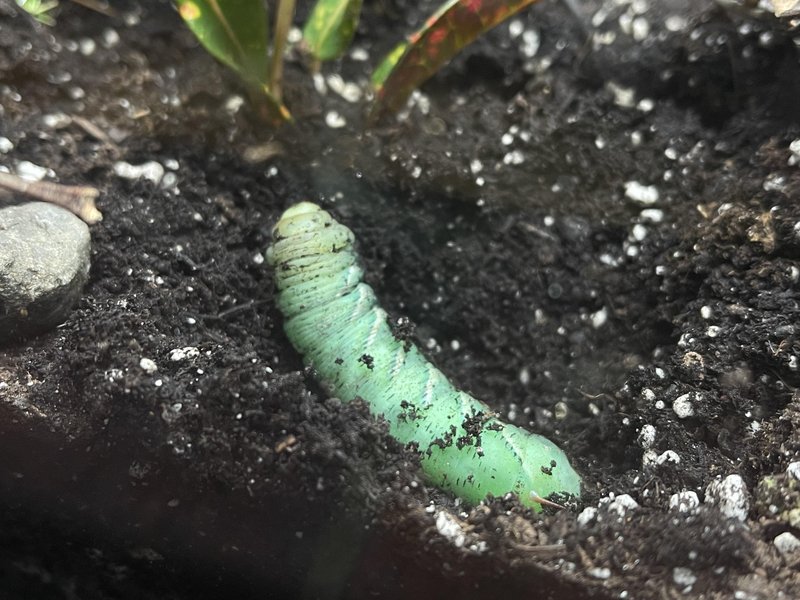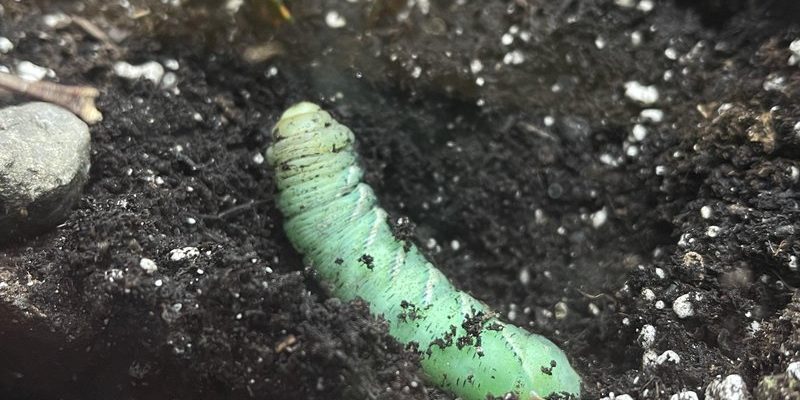
Using hornworms in classes can make complex concepts easier to understand. Think of it this way: Having a live specimen in front of you is like having a mini-laboratory right on your desk. You can observe their behavior, life cycle, and even their unique characteristics up close. Plus, they’re often a hit with students, turning what could be a dry topic into a lively discussion filled with curiosity. So, let’s dive deeper into why these little creatures are making waves in entomology classes.
What Are Hornworms?
Hornworms are the larval stage of the **tobacco hornworm moth** (Manduca sexta) and are part of the Sphingidae family, which includes many other interesting moths. They’re typically found munching on tobacco and tomato plants, making them a common sight for gardeners. Hornworms have a strong appetite, which means they grow quickly and can reach substantial sizes in just a week or so. This rapid development makes them an excellent subject for study.
What makes hornworms particularly interesting is their physical appearance. They possess a distinct horn-like structure on their tail end, which many people find intriguing. This horn isn’t just for show; it likely serves as a defense mechanism against predators. However, hornworms aren’t just fascinating because of their looks. Their life cycle—from egg to larva to pupa and finally to adult moth—offers students a real-life example of *complete metamorphosis*, which is a key concept in entomology.
The Benefits of Using Hornworms in the Classroom
Using hornworms in entomology classes can enrich the learning experience in several ways. First and foremost, they provide a hands-on approach to studying insects. When students can engage directly with the specimens, they’re more likely to remember what they learn. This tactile experience makes lessons come alive.
Hornworms also serve as excellent live specimens to illustrate key biological concepts. For example, observing how they feed on plant leaves can lead to discussions about ecology, plant-insect interactions, and even pest management in agriculture. This direct observation encourages critical thinking—students might ask why certain plant species attract hornworms while others do not. Here’s the thing: these questions are the essence of scientific inquiry.
Another benefit is the opportunity for students to witness life cycles in real-time. Unlike textbook examples, hornworms allow for observation over days or weeks, creating anticipation as students watch them grow from larvae to pupae. It’s a fantastic way to bring the idea of life cycles to life!
How to Care for Hornworms in the Classroom
Taking care of hornworms isn’t as daunting as it may seem. Keeping them healthy is essential for a successful educational experience. Here are a few tips to get started:
- Housing: Use a simple plastic container with air holes. Keeping them in a secure yet breathable environment helps prevent mold and odors.
- Temperature: Hornworms thrive in warm conditions, ideally around 75-85°F. Avoid exposing them to extreme temperatures; a stable environment is key.
- Food: They love to munch on tomato leaves, but you can also buy specialized hornworm diet from pet stores. Providing fresh food regularly ensures they stay healthy and active.
- Humidity: Keep the humidity around 50-60%. A light misting can help, but be careful not to soak them.
Establishing a proper habitat is crucial because it affects their growth and overall well-being. If students see them thriving, it helps reinforce the lessons they’re learning. Honestly, it’s one of those things where a little effort goes a long way.
Integrating Hornworms into Curriculum
Now that you’re familiar with hornworms and how to care for them, let’s talk about integrating them into your curriculum. You can tie them into various subjects, making your lessons more interdisciplinary. Here’s a few ideas:
- Biology: Discuss the stages of metamorphosis and explore topics like adaptation and natural selection.
- Ecology: Use hornworms to examine food webs and the role of pests in ecosystems.
- Agricultural Science: Analyze the impact of hornworms on crops and explore pest management strategies.
By connecting hornworms to different subjects, you not only keep students engaged but also illustrate the interconnectedness of scientific disciplines. It’s all about showing them that science isn’t isolated; it’s a web of ideas and concepts.
Common Challenges and Troubleshooting
Like any living specimen, hornworms can present some challenges. Being prepared can make all the difference:
- Overfeeding: Too much food can lead to mold and unhealthy conditions. Monitor their food supply and remove any uneaten leaves daily.
- Shedding Issues: Hornworms shed their skin as they grow. If you notice abnormal shedding, it might indicate they need more humidity.
- Pest Control: Occasionally, you might find pests like mites or flies. Ensure you maintain cleanliness and separate your hornworms from other insects.
By being proactive, you can tackle these problems before they get out of hand. Teaching students about these challenges can also lead to important conversations about the responsibilities of caring for living organisms.
Using hornworms in entomology classes can transform a standard lesson into an engaging experience. These creatures offer a hands-on approach to learning about metamorphosis, ecology, and biology. As students observe their growth and behavior, they build a deeper understanding of the natural world around them.
By integrating hornworms into your curriculum, you spark curiosity and foster critical thinking. It’s not just about learning facts; it’s about inspiring the next generation of scientists. So, why not bring hornworms into the mix? You might just find that they become a highlight of your biology lessons!

